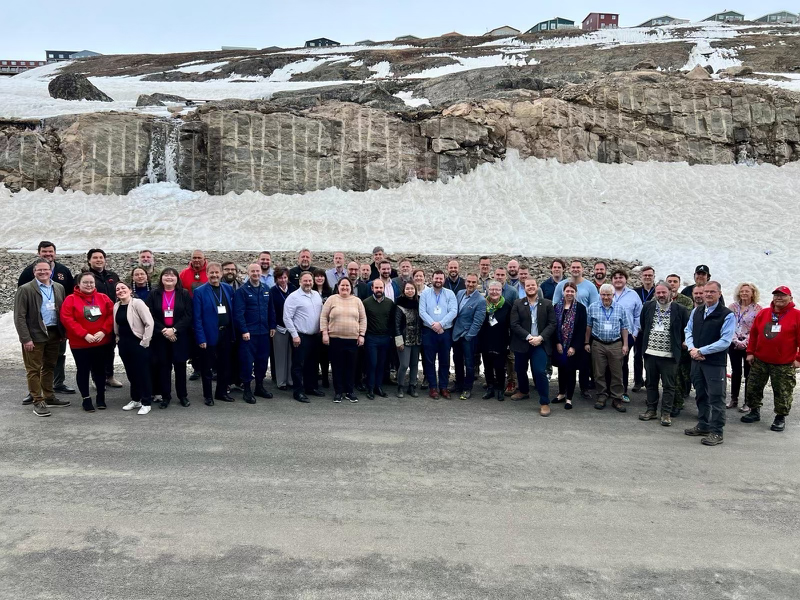
Editor’s note for op-ed: Dr. Kathryn Friedman is the North American Arctic Policy Advisor for the Ted Stevens Center for Arctic Security Studies, a U.S. Department of Defense Regional Center based in Alaska. The views expressed in this article only reflect her own views, not those of TSC or the U.S. Department of Defense.
The Arctic is at an inflection point. Great power competition, complex operational environment impacts, increased PRC interest in critical minerals and natural resources, and strengthened Russian military presence have led many in defense and security circles to recognize the strategic importance of this region.
This recognition is particularly acute with regard to the North American Arctic. This vast expanse of North America – which includes Greenland, Canada (Nunavut, the Northwest Territories, Yukon) and the United States (Alaska) – is strategically located between the IndoPacific and Europe. Toward the west, the United States shares a maritime boundary with Russia; toward the east, the GIUK gap serves as a significant naval chokepoint. Greenland itself is uniquely positioned, geophysically proximate to the North American continent, politically rooted in the Kingdom of Denmark, however, strengthening its own course in the Arctic with a new 2024 foreign policy strategy. All three North American countries boast membership in NATO – Greenland through Denmark’s membership yet sending its own representative to join the Danish delegation to NATO in 2023. And Canada and the United States are partners in NORAD, the world’s only binational command that routinely demonstrates its capabilities and readiness in the region.
Unlike the European High North and the Russian Arctic, the North American Arctic is the most treacherous and least populated subregion. As a result, a number of Department of Defense operational challenges exist. First you must get there and bring everything that you need to do the job. Upon arrival, communications, surveillance, and navigation can be impacted by limited satellite options, lack of infrastructure, and electromagnetic disturbances. Further, operating in extreme cold requires special preparation in terms of personnel and technology.
To examine these factors – among others – the North American Arctic Security Workshop (NAASW) was held in May 2024 in Iqaluit, Nunavut. Cohosted by the Ted Stevens Center, the North American and Arctic Defense and Security Network and the University of Greenland Ilisimatusarfik’s Nasiffik Center, NAASW convened diverse experts from Canada, the Kingdom of Denmark (with a specific reference to Greenland), and the United States. It served as an important platform to amplify shared interests and build strong sustainable networks of Arctic security leaders.
NAASW explored topics including the evolving security environment, hybrid threats, pan-domain awareness, the Canadian Rangers, Arctic governance, NORAD defense modernization, and logistics and supply chain resilience. Participants also engaged in discussions regarding broader safety concerns such as SAR and all dimensions of security.
Reflecting on the successful execution of NAASW, I am reminded of a line spoken by Antonio in Shakespeare’s Merchant of Venice Act 1, Scene 1: “I hold the world, but as the world . . . A stage where every man must play a part . . ..” As DoD recently stated, the Arctic serves as a linchpin to homeland defense on the global “stage.” NAASW represents one way to support this “part” and contribute toward securing a strong, safe, and prosperous North American Arctic for generations to come.
